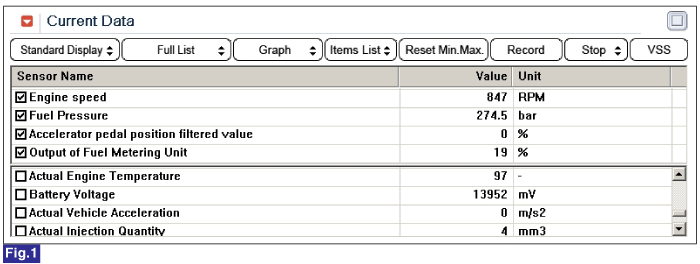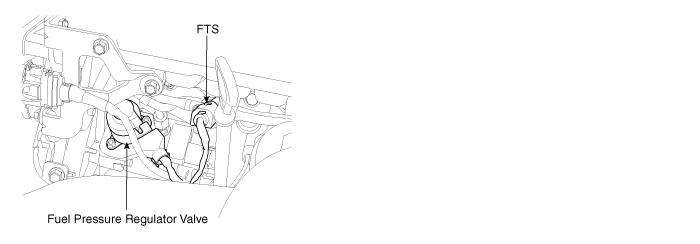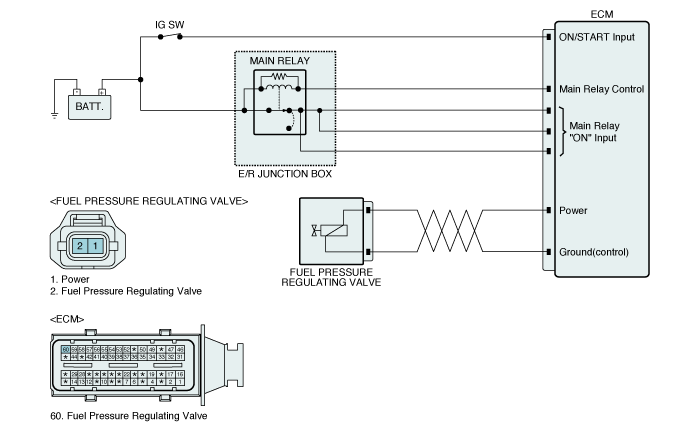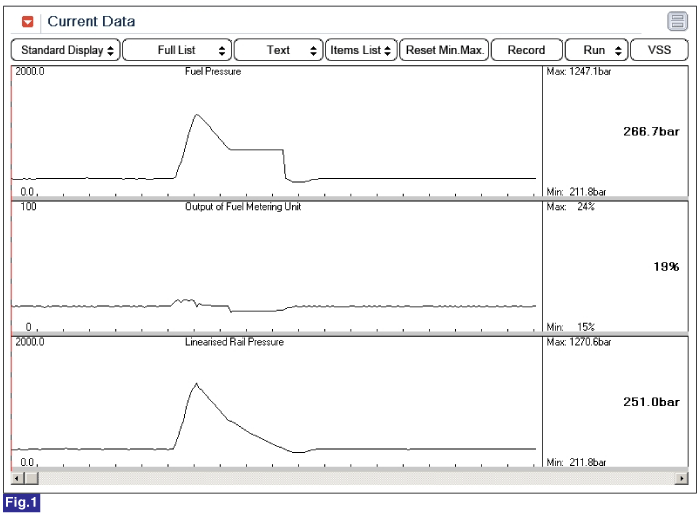Monitor "FUEL PRESSURE MEASURED", "RAIL PRESS. REGULATOR1", "INJ. PUMP REGULATOR" parameter on the GDS.
Idle(without load) | Accelerating(stall test) | Diagnosis | |
INJ. PUMP REGULATOR | 38 ± 5% | 32 ± 5% | duty decreases |
FUEL PRESSURE MEASURED | 28.5 ± 5 Mpa | 145 ± 10 Mpa | press. increases |
RAIL PRESS. REGULATOR1 | 19 ± 5% | 48 ± 5% | duty increases |

Fig 1) Service data of Fuel pressure regulator valve at idle.
The waveform of rail pressure regulator valve installed at common rail shows 19% duty at idle,
duty rises to approx. 48% at acceleration to raise rail pressure. Duty rise means the increase of current.
→ If current rises, the returning quantity of fuel deliverd to common rail decreases and common rail pressure rises.





